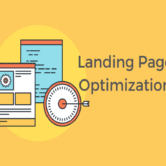
Are vertical or horizontal signs more effective at roadshows?
Visibility and Eye-Level Reach
- Vertical signs align better with the natural line of sight in crowded spaces.
- They are easier to notice from a distance when placed on stands or poles.
- Horizontal signs work well when mounted across stalls or walls.
- Vertical formats are more effective in narrow walkways or aisles.
- Placement height and direction determine which format attracts quicker attention.
Space and Installation Efficiency
- Vertical signs occupy less horizontal space, ideal for compact booth setups.
- They fit well beside counters, entry points, or product displays.
- Horizontal signs require more width but offer continuous visual flow.
- Installation flexibility favors vertical signs for mobile or pop-up use.
- Banners, flags, or standees in vertical format are easier to deploy quickly.
Content Layout and Readability
- Vertical signs are best for simple, high-impact messaging with few words.
- Horizontal signs can accommodate more content across wider lines.
- Text hierarchy and font size must be adapted to the format.
- Visual elements like icons or product images scale better in horizontal layouts.
- Choice depends on whether the sign focuses on branding or detailed information.
Crowd Navigation and Directional Use
- Vertical signs are ideal for branding, offers, and attention capture.
- Horizontal signs perform better for directional arrows or schedule displays.
- Roadshow attendees move quickly, favoring vertically oriented attention cues.
- Horizontally extended signage is more effective across stages or canopy fronts.
- Combining both formats supports wayfinding and brand reinforcement.
Branding and Design Consistency
- Vertical formats complement roll-up banners, digital kiosks, and pole flags.
- Horizontal formats match canopy headers, backdrops, and tabletop displays.
- Design elements must be adapted to preserve consistency across both.
- Vertical signs offer stronger standalone brand presence in dynamic environments.
- Final format depends on booth size, brand hierarchy, and audience flow.





